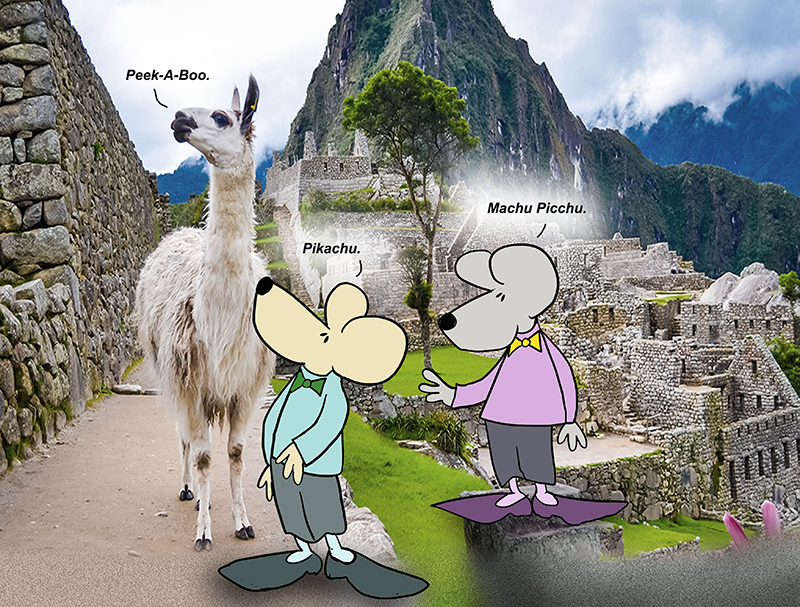Oh, how this world turns. At one time, the Inca people lived in the largest empire in the world. They named it “The Land of Four Quarters” — a distinction made by their way of governing. Their world flourished in ancient Peru between c. 1400 and 1533 CE. But, tragically, their demise came in 1533.
It is hard to believe, really. There were 10 million Inca people living there at the time, in a land that encompassed 2,500 miles. Their empire stretched from southern Colombia in the north to central Chile in the south. Huge-ish.
They were smart people. And, they had the bounty of the land with them. The good climate allowed the Inca to inhabit higher altitudes and produce agricultural surpluses. The amazing site of Machu Picchu is evidence of this. I have never been there, but I sure have seen the photos. In addition, they built a road network of 14,000 miles. Llama speedways.
So one has to wonder, how in the heck did a measly 200 Spanish conquistadors crumble an entire Incan empire and capture its Emperor Atahualpa?
Well, it was pretty much the same way every other bullying-white-man-bunch-of-explorers did, all over the “new” world, which wasn’t so new.
First and foremost, they brought disease. Since the arrival of the Spanish conquistadors in the Americas, those brand new diseases had steadily weakened native populations. The Incan empire had been especially struck by smallpox. And I mean in a big way. The population had been reduced by an estimated two-thirds. Smallpox even claimed the life of Atahualpa’s father, Emperor Huayna Capac.
And you know how things go in families. After his father’s death, Atahualpa waged a civil war against his half-brother Huascar. I’m not sure why. Maybe he wouldn’t pass the potatoes. Anyway, that war lasted six years. To top things off, after winning the war against his brother, Francisco Pizarro came knocking with his Spanish troops in 1532.
And you know how mercenaries can be. Pizarro and his small force of soldiers were clearly inspired by the success of Hernán Cortés in Mexico and how Cortes had raped, pillaged, and plundered there. What a thing to look up to.
Anyway, Pizarro, in a daring ambush on November 16, 1532, surprised Atahualpa and his lightly armed followers in the town square of the city of Cajamarca. It turned out to be one horrible massacre. In one hour, they shot and killed 5,000 of his men, sparing only Atahualpa himself.
Pizarro knew that Atahualpa was more valuable to him alive than dead. With Atahualpa captive, the Incan generals did not dare to attack. But then, the good Emperor Atahualpa then convinced Pizarro to ransom him for a room filled with gold and silver.
Well, never trust a Spanish Mercenary with smallpox and a gun. Once the treasure was gathered, the Spanish refused to release Atahualpa. Instead, they gave him a choice. He could either be burnt alive — which was a pagan’s death — oooorrrr — he could convert to Christianity and have the kinder death of strangulation.
Atahualpa chose the latter and was garroted on August 29, 1533, and given a Christian burial. I’m sure God had some things to say about that.
From that point, it was all downhill. With Atahualpa dead, the empire collapsed. The Spanish showed more muscle over the Inca by marching on the capital and taking over without further conflict.
Of course, there is that famous hoard of treasure. Well, it never made it in time for Atahualpa’s ransom. And, supposedly, it lies hidden somewhere in the Andes.
Then there is the matter of the city of Machu Picchu. It remained undiscovered by the Spanish and was eventually abandoned by the Incas. It wasn’t until the American explorer Hiram Bingham happened upon it in 1911 that its existence became widely known only.
And that, in a nutshell, is the fall of the Incas.
==========
“Forgiveness is not an occasional act, it is a constant attitude.”
― Martin Luther King Jr.
==========
“Forgiveness is the fragrance that the violet sheds on the heel that has crushed it.”
― Mark Twain
==========
“The stupid neither forgive nor forget; the naive forgive and forget; the wise forgive but do not forget.”
― Thomas Szasz
=========
Inca. Dinka. Doo. Doo.
